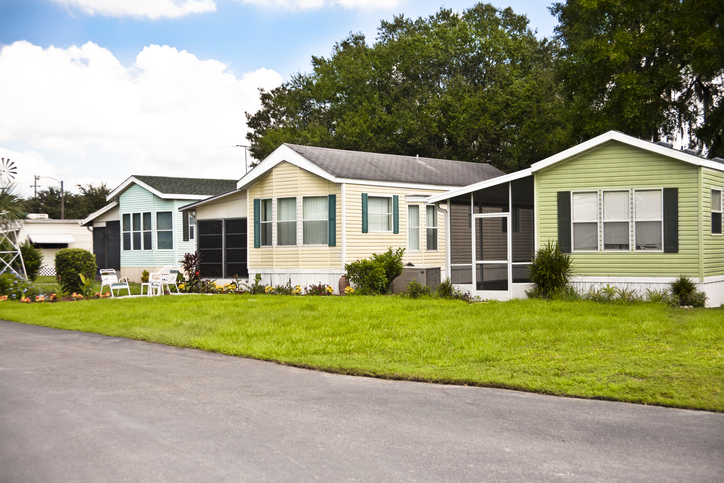
Weather and the effects of climate change may affect construction productivity and real estate development more than people think. President and CEO of MOCA Systems, Inc. Sandy Hamby shares some insights on the topic. MOCA Systems, Inc. is a leading provider of software and services for the architecture, engineering and construction industry.
How Have Heatwaves Impacted Construction and Development?
This summer has seen continuous heatwaves across the country, with record-high temperatures affecting many. For construction workers and other outdoor employees, the heat has taken its toll.
“The construction industry’s labor productivity is significantly influenced by temperature fluctuations, especially during extreme weather events like heat waves,” Hamby notes. “Recent research indicates that severe weather conditions, such as heavy precipitation or extreme temperatures, can drastically reduce productivity.”
Hamby shares that at temperatures around 77 degrees Fahrenheit, productivity losses range from 0-25%, depending on the work type. Heavy precipitation and low temperatures can do the same, with horizontal work areas being especially vulnerable.
What About Precipitation?
“Precipitation significantly impacts construction task productivity,” Hamby says, citing this summer’s Hurricane Beryl, a Category 5 Atlantic hurricane that hit the Caribbean and the Gulf Coast in June and July.
“Light rain (0.02” per hour, 0.5 mm per hour) typically results in minimal productivity loss for most tasks, with most respondents reporting a 0-10% reduction,” she notes. “However, activities such as pouring concrete slabs are more affected, with 20% of respondents estimating a 25% productivity decrease. This suggests that even light precipitation can disrupt tasks requiring precise and continuous operations, especially on horizontal surfaces.”
Heavier precipitation, like that which occurs during hurricanes and other natural disasters, can cause up to 50% productivity loss, with those pouring concrete slabs reporting even a 100% loss in productivity.
How Can the Real Estate and Construction Industries Face Weather-Related Setbacks?
“The real estate and construction industries are increasingly leveraging new technologies to help tackle the mounting challenges posed by climate change and extreme weather events,” Hamby says. “Climate modeling and proprietary climate risk tools are at the forefront of this technological shift, offering predictive insights that help in planning and mitigating risks associated with unpredictable weather patterns.”
Climate modeling can help construction planners foresee potential weather disruptions and make informed decisions to minimize delays and costs.
“In addition to climate modeling, the adoption of remote work technologies offers another layer of resilience. When weather conditions make it impossible to continue on-site work, remote work capabilities ensure that project management, planning and coordination can continue uninterrupted. This flexibility is crucial in maintaining progress and mitigating the financial impacts of weather-induced delays.”
Hamby shares that technology such as Touchplan® can aid both the real estate and construction industries in navigating weather-related variances. In the past year, weather was the sixth biggest variance reason impact project schedules, with 17,350 weather-related reasons reported.
Any Other Tips to Minimize Weather Impact?
Hamby notes that in 2023, the United States experienced 28 billion-dollar weather-related disasters – an increase from 18 events in 2022 – including droughts, wildfires, floods, hurricanes and more.
“Developers can significantly minimize future climate risks by incorporating resilient building strategies into their projects. This proactive approach not only enhances the durability and longevity of buildings but also positions properties for economic success amidst increasing extreme weather events.”
“Moreover,” she continues, “Incorporating climate-resilient materials and technologies can further mitigate the impact of extreme weather on construction productivity. Utilizing sustainable building materials, such as low-carbon cement or algae-based bricks, and implementing smart building sensors can enhance a structure’s resilience to adverse conditions while promoting energy efficiency.”
“Additionally, adjusting construction schedules to account for seasonal weather patterns and providing worker protects, such as hydration stations and shaded work areas, can help maintain productivity and safety during extreme weather events.”
“By embracing these strategies, the construction industry can not only adapt to the changing climate but also lead the way in sustainable and resilient building practices,” Hamby concludes.
Topics
Member Discussion
Recent Articles
-
Manufactured Homes Serve as Affordable Options for Millions
- May 13, 2025
- 2 min. read
“Manufactured homes make up only 5% of the total housing stock but provide an alternative form of housing that meets the needs of various households, particularly in rural areas,” says NAHB.
-
Erica Rawls, Harrisburg Realtor®, Named Woman of Influence by CPBJ
- May 12, 2025
- 2 min. read
“Real estate has always been more than just a career for me – it’s a calling,” Rawls shares. “It’s about helping people navigate life-changing moments … “
-
Seller’s Property Disclosure: From the Buyer’s Side
- May 9, 2025
- 4 min. read
A lot of education about the Seller’s Disclosure Law is about a seller’s responsibilities. But what are some things that buyers (and their agents) should be taking into consideration when reviewing the Seller’s Property Disclosure Statement?
Daily Emails
You’ll be the first to know about real estate trends and various legal happenings. Stay up-to-date by subscribing to JustListed.



